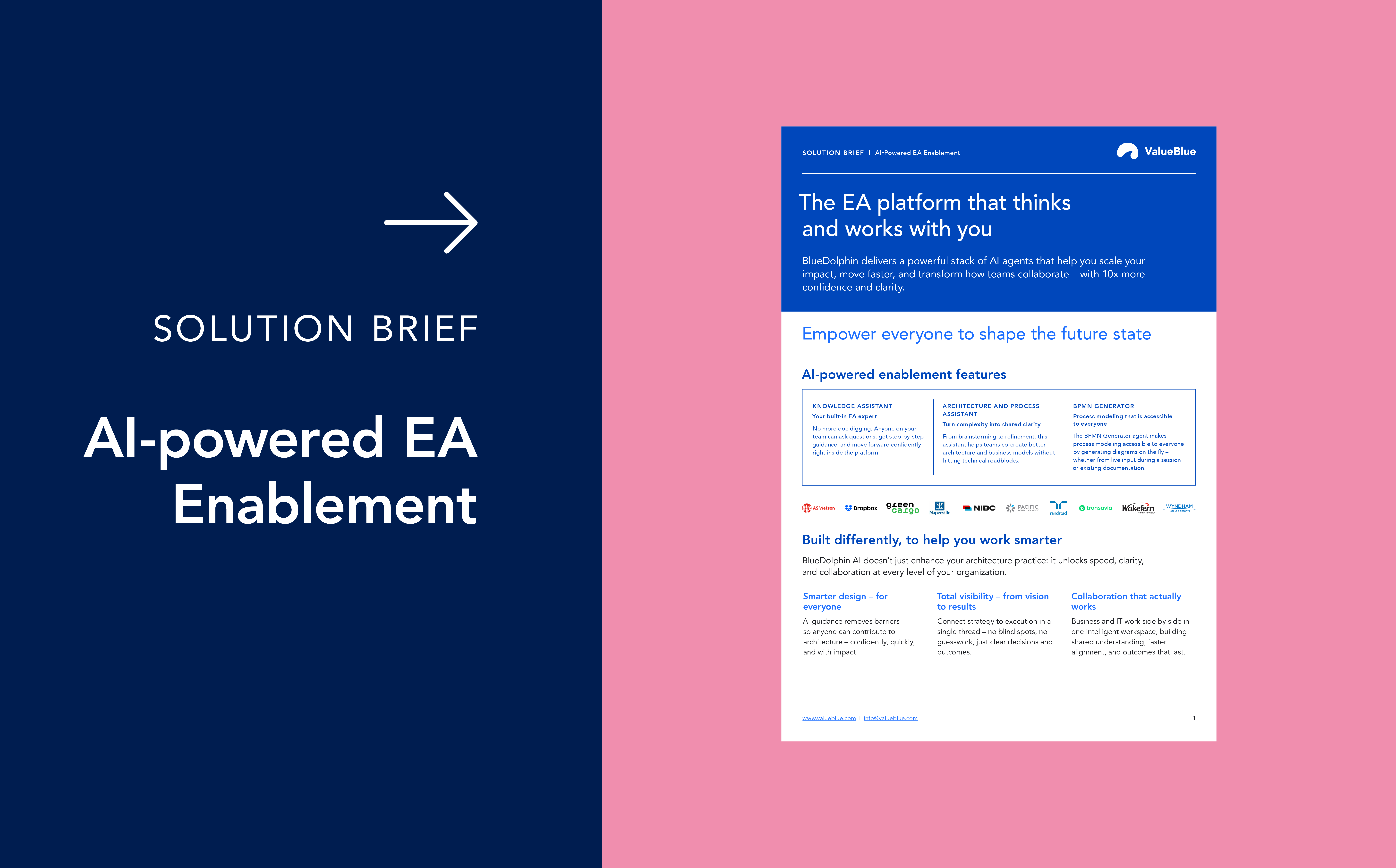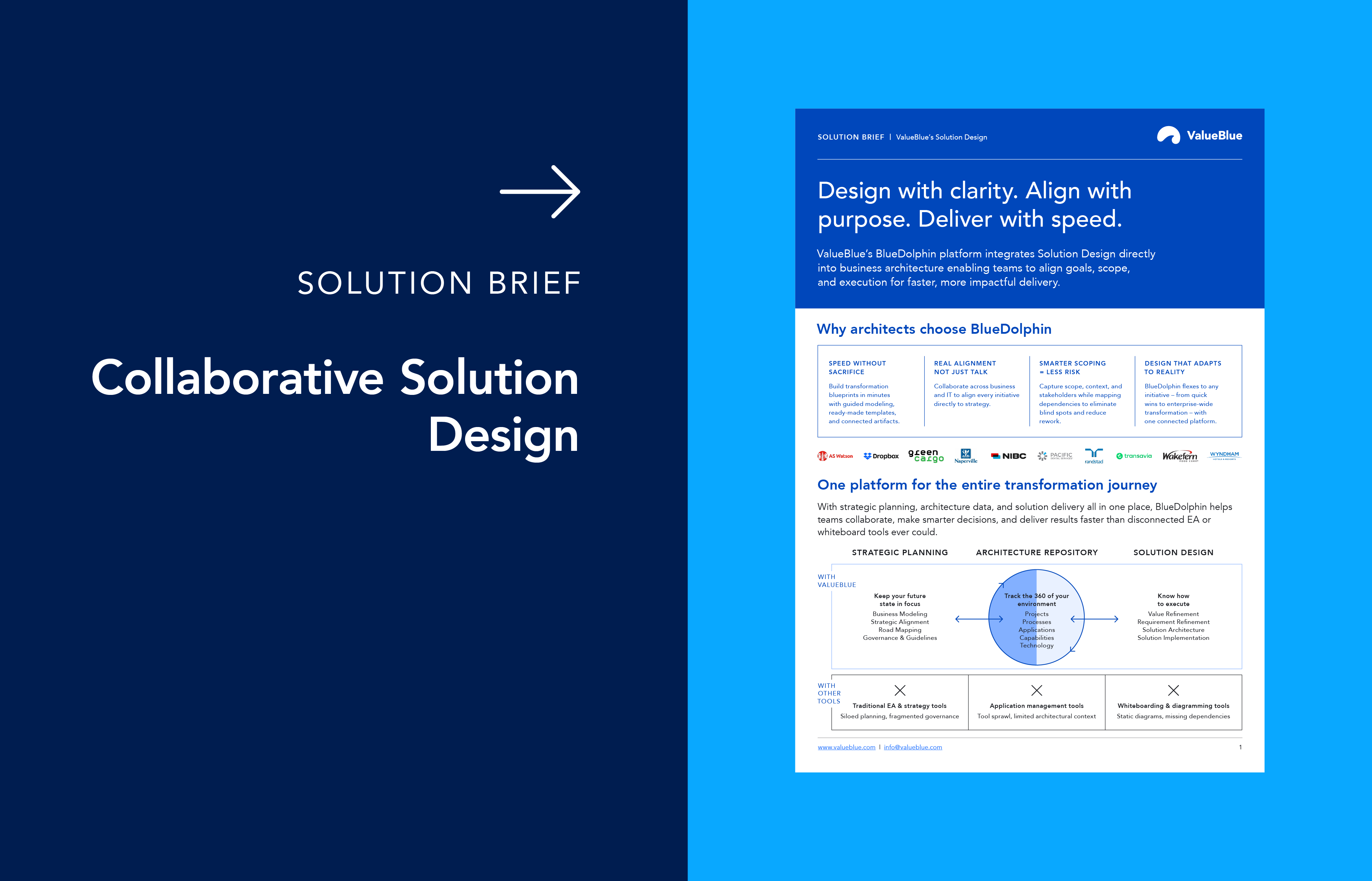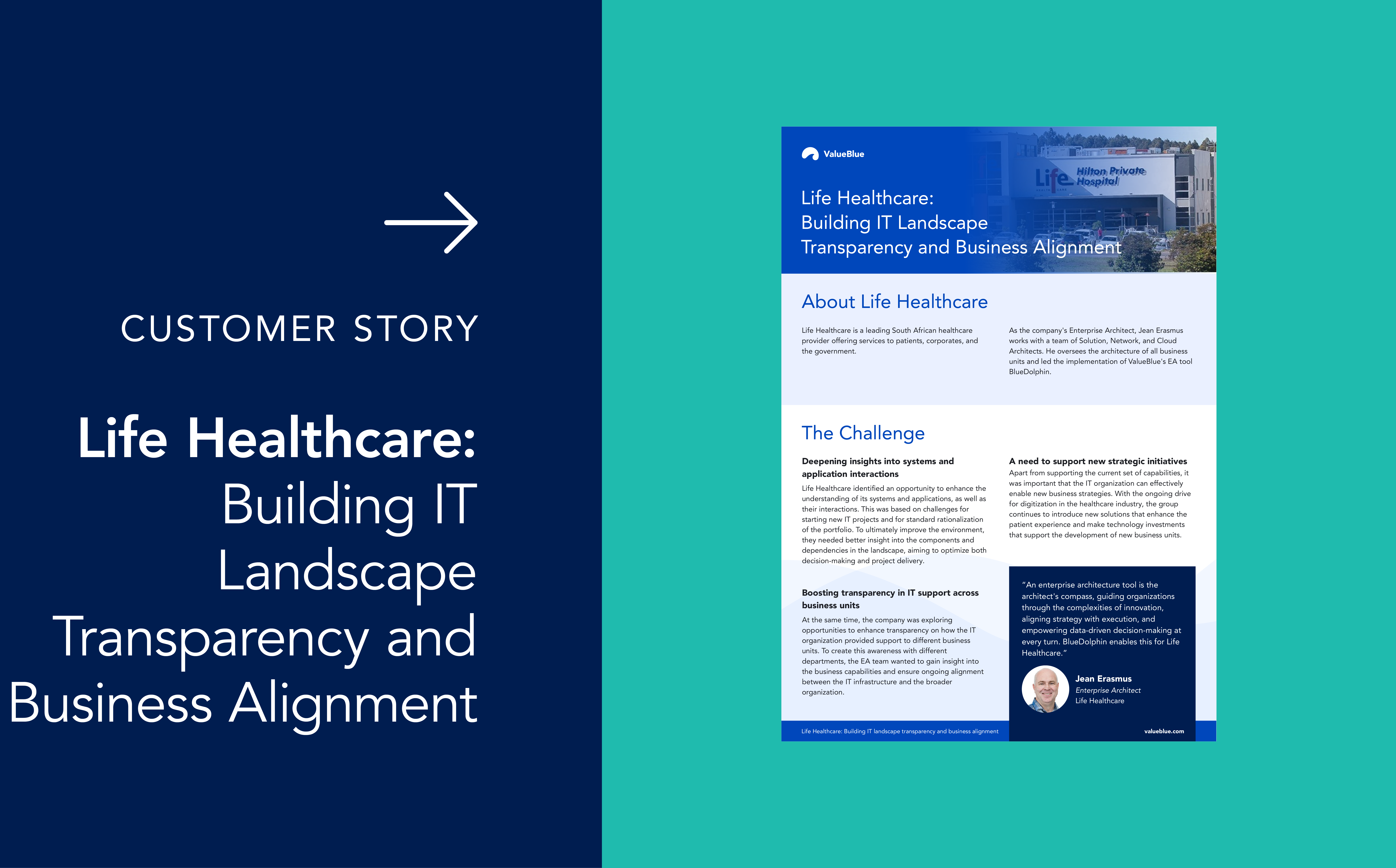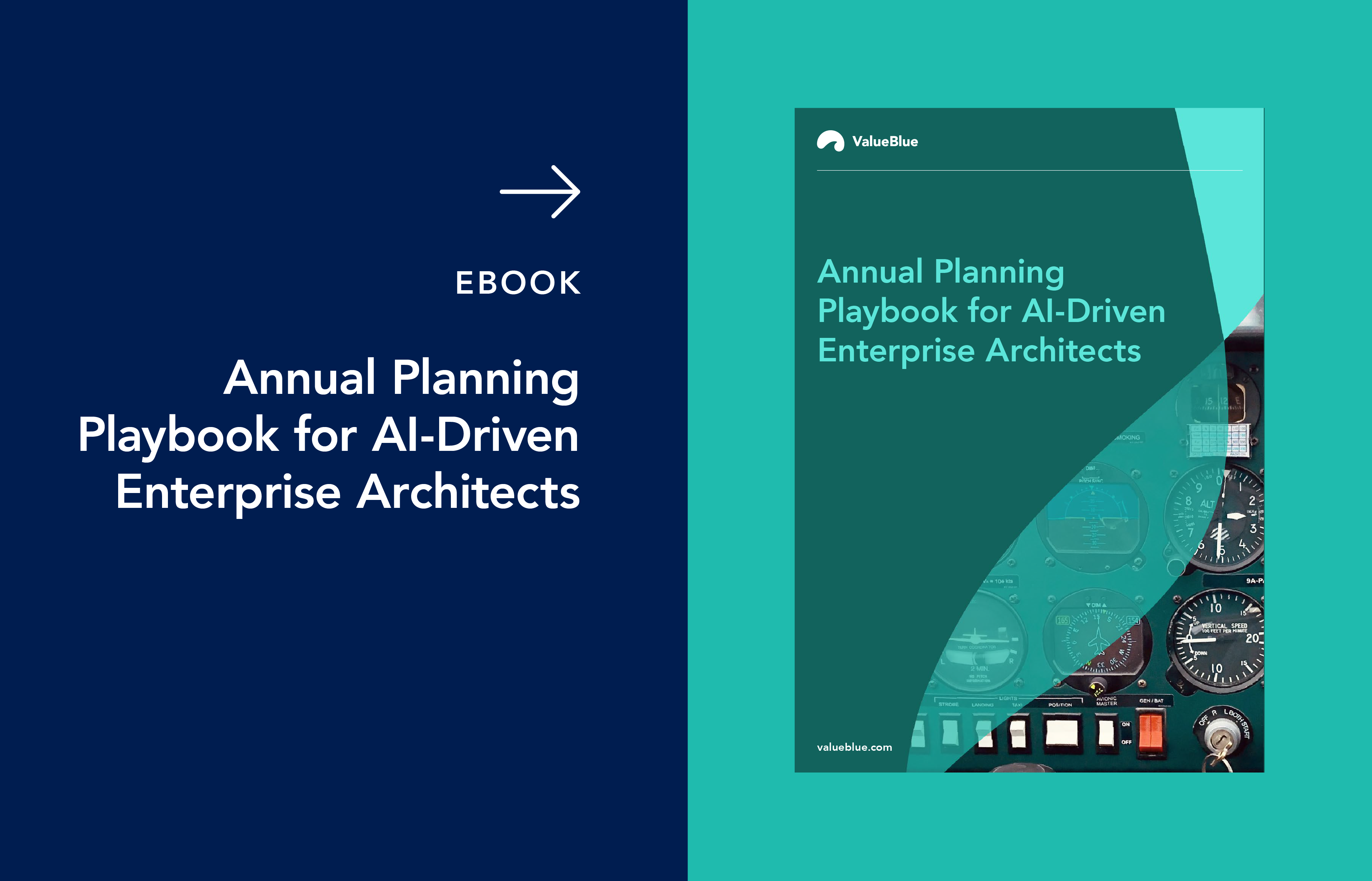What is Solution Design in Enterprise Architecture?
Modern organizations face a growing challenge: how to deliver technology solutions that truly meet business needs while keeping pace with constant change. Often, solutions are developed without coordination, leading to misalignment, wasted resources, and increased risk. Solution Design, implemented in Enterprise Architecture, solves this problem by bridging the gap between business goals and technology execution. With the right approach and supporting tools, organizations can design solutions that are aligned, efficient, and adaptable to future needs.
Enterprise Architecture: The foundation of Solution Design
Enterprise Architecture (EA) provides the strategic framework for aligning business objectives with IT capabilities. Its primary role is to define the structure, standards, and principles that guide how IT assets and business capabilities are aligned to achieve organizational goals. EA is inherently holistic, focusing on the big picture: it maps business objectives, processes, data, applications, and technology into a cohesive blueprint that supports long-term strategy and operational efficiency.
Enterprise Architecture enables organizations to:
- Map business goals to IT solutions
- Identify dependencies and risks
- Prioritize and plan transformation projects
- Govern and standardize solution implementation across the enterprise
However, as organizations grow and their landscapes become more complex, the need for a structured approach to change becomes paramount.
The role of Solution Design in Enterprise Architecture
While Enterprise Architecture sets the direction, Solution Design is the discipline that translates high-level strategy into actionable, detailed plans for specific projects or business needs. Solution Design is the process of architecting, modeling, and planning the implementation of a solution that addresses a defined business problem or opportunity.
Key activities in Solution Design include:
- Understanding and refining business requirements.
- Designing the architecture of the solution, including all technical and business components.
- Evaluating and selecting appropriate technologies.
- Mapping interactions, dependencies, and integration points.
- Aligning the solution with Enterprise Architecture principles and constraints.
- Creating implementation plans that guide development and deployment.
Solution architects serve as the bridge between the high-level vision of enterprise architects and the technical execution of development teams. Their work ensures that every solution is not only technically viable but also strategically aligned and capable of delivering measurable business value.
Why Solution Design matters
Despite the best intentions, many transformation projects fail to deliver their expected benefits. This usually happens due to two main challenges:
- Complexity and lack of overview: As organizations’ landscapes become more intricate, it becomes difficult to identify where improvements are needed and to foresee the impact of changes.
- Lack of alignment: Projects are rarely executed in isolation; they must serve business goals and involve multiple stakeholders. Misalignment between project teams and business objectives can lead to wasted effort and missed opportunities.
The Solution Design process: From idea to implementation
A Solution Design process typically follows these stages:
1. Setting the project context
- Establishing the project’s context and linking it to strategic business goals.
- Capturing metadata, objectives, and relevant principles or policies.
- Documenting the current state of affected business capabilities and architecture components.
2. Value refinement
- Aligning the solution idea with stakeholders.
- Identifying and prioritizing the most valuable aspects of the proposed solution.
- Using visual tools and collaborative sessions to validate the initial idea and gather broader input.
- Updating high-level designs based on stakeholder feedback, ensuring the solution addresses real needs.
3. Requirement refinement
- Translating business needs into clear, actionable requirements, including principles, policies, and regulations.
- Leveraging existing architectural information, such as heatmaps or objectives, to inform requirements.
- Iterating on high-level designs as requirements evolve, maintaining alignment with business goals.
4. Solution architecture & implementation design
- Developing detailed architectural models that define how the solution will be built and integrated.
- Connecting business, application, data, and technology layers into a coherent model.
- Analyzing and optimizing the solution for efficiency, scalability, security, and maintainability.
- Preparing implementation plans that guide teams through development, testing, and deployment.
Want to see how this works in practice? Book a short BlueDolphin demo.
Learn how you can use Solution Design in your transformation initiatives.
Best practices for Solution Design in Enterprise Architecture
To maximize the value and success of solution implementation, here are the best practices:
- Maintain a single source of truth: Use a central repository to manage all architecture data, ensuring consistency and traceability.
- Iterate and collaborate: Engage stakeholders early and often, using visual tools and feedback loops to refine value, requirements, and designs.
- Design for change: Clearly distinguish between current and future states, and plan for phased, agile implementation.
- Integrate with delivery tools: Ensure that solution designs flow seamlessly into project management and development workflows, enabling efficient execution.
- Continuously improve: Use analytics, transaction logs, and conflict resolution tools to monitor progress, resolve issues, and keep the architecture up to date.
How BlueDolphin empowers Solution Design
BlueDolphin offers a comprehensive, collaborative platform tailored to the needs of enterprise architects, solution designers, and their stakeholders. Our approach is grounded in three core capabilities:
1. Value refinement
BlueDolphin enables teams to visually align on solution ideas with stakeholders, using tools like Value Proposition Canvas and Service Blueprints. This fosters early validation, stakeholder engagement, and the identification of the most valuable solution features. Visuals and high-level designs can be easily updated and shared, ensuring that the solution concept evolves with stakeholder input.
2. Requirement refinement
With BlueDolphin, organizations can gather, refine, and manage solution requirements collaboratively. The platform supports the translation of requirements into visual designs and service blueprints, connecting business needs directly to architectural models. This iterative process ensures that requirements remain aligned with both business objectives and technical constraints.
3. Solution architecture & implementation design
BlueDolphin provides a structured workspace for designing solution architectures that connect business, application, data, and technology layers. Its minimal viable product (MVP) approach ensures that even complex organizations can start with a manageable model, customizing as needed while maintaining a unified architectural repository. This centralization supports analysis, collaboration, and alignment across all stakeholders, not just architects. The result is a living Enterprise Architecture model that guides solution implementation and adapts as the organization evolves.
The value of integrated Solution Design
Solution Design plays a critical role in turning strategic intent into real, effective outcomes. When embedded in Enterprise Architecture, it ensures that every solution is aligned with business goals, shaped by clear requirements, and built for long-term success.
Ready to design smarter, faster, and with greater impact? Explore how BlueDolphin empowers teams to deliver aligned, future-ready solutions. Schedule a demo today.
Book a demo
Want to discover how our tool can further enhance your Enterprise Architecture? Fill in the form!
Have questions about Enterprise Architecture best practices?
Our experts are happy to help.





